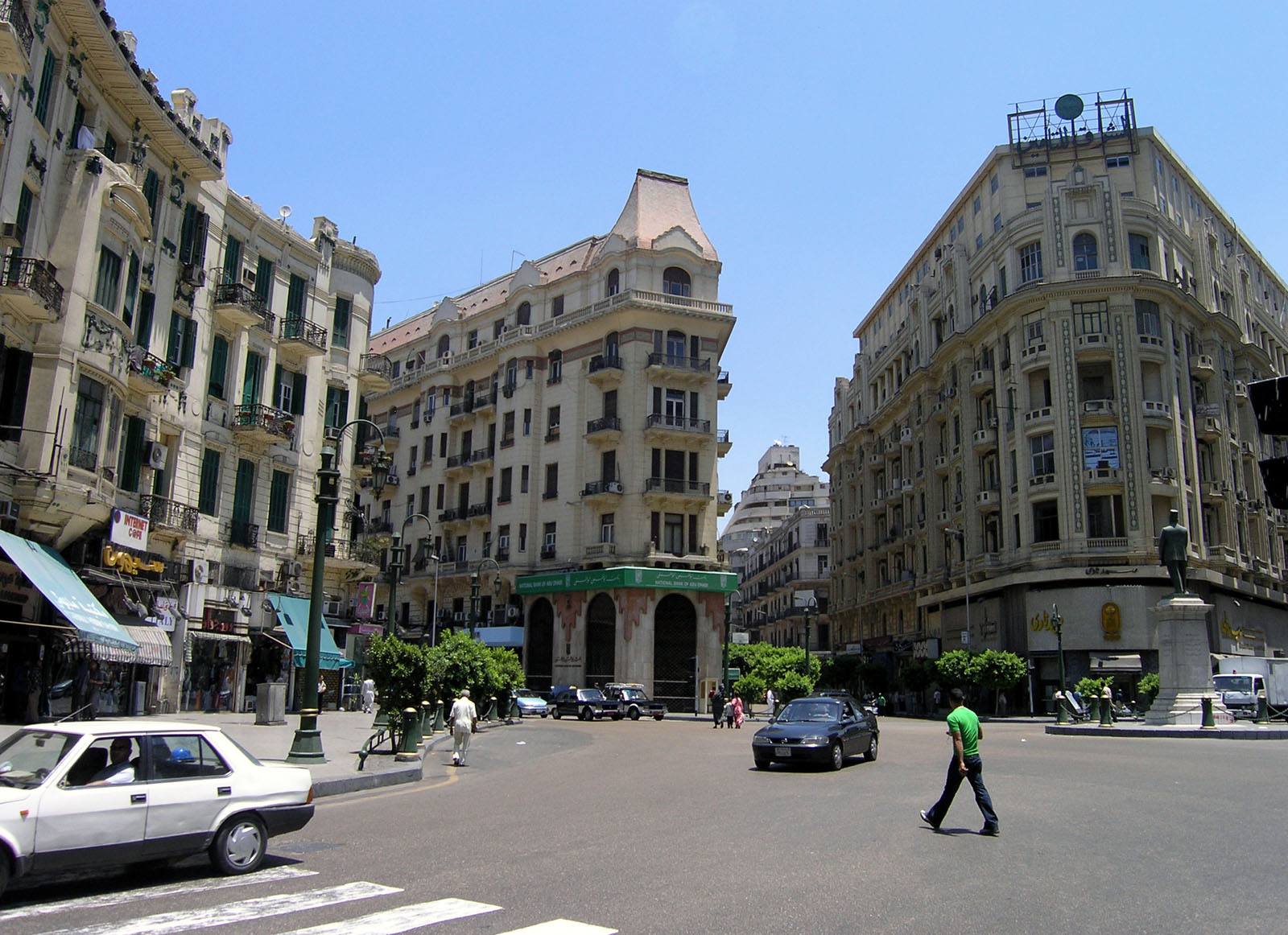 Visitors to Downtown Cairo these days are bound to notice that the facades of the buildings overlooking the main streets are being given a new coat of paint. The walls are painted in a creamy hue of beige while the wooden elements such as the shutters are painted in dark brown. It is not clear, however, who or what authority is in charge of the task; no sign is there to indicate that information. Some passers-by may vaguely recall a State-sponsored project to conserve the architectural heritage of special districts in Cairo among which, undoubtedly, Downtown Cairo stands out for the large collection of characteristic buildings it houses.
Visitors to Downtown Cairo these days are bound to notice that the facades of the buildings overlooking the main streets are being given a new coat of paint. The walls are painted in a creamy hue of beige while the wooden elements such as the shutters are painted in dark brown. It is not clear, however, who or what authority is in charge of the task; no sign is there to indicate that information. Some passers-by may vaguely recall a State-sponsored project to conserve the architectural heritage of special districts in Cairo among which, undoubtedly, Downtown Cairo stands out for the large collection of characteristic buildings it houses.
Quest for beauty turns ugly
Youseef Sidhom
Opinion
00:11
Sunday ,21 November 2010

The credit for drawing attention to the marvellous architectural heritage of Downtown Cairo goes to architect Soheir Zaki Hawas who took it upon herself to painstakingly document and photograph the buildings of the Downtown quarter and publish her monumental work in 2002 in a book that has become a reference on the topic. Thus started a campaign to rescue these buildings from the ravages of time and the infringements which disfigured their aesthetic quality; in short, to restore them to their original splendour.
The magnificent Downtown Cairo quarter took over three-quarters of a century to build, witnessing a distinctive urban renaissance during the second half of the 19th century and well into the latter half of 20th, in an effort to make Cairo the ‘Paris of the Orient’. Why these buildings were later left to deteriorate so severely is a classic feature of the post-1952 Revolution years. The socialist laws decreed by the Nasser regime imposed such low rents on these buildings—claiming to defend the ‘poorer’ tenants against the ‘greedy capitalist’ owners. As time passed and the value of money deteriorated, these rents were entirely inadequate for the upkeep and maintenance of the buildings. Today, the rent paid for a Downtown Cairo flat may barely buy 250 grammes of beef.
Obviously, a project to restore the magnificence of the Downtown Cairo buildings is bound to be beset with countless shortfalls, major among which is inadequate funding. But even if the current effort is to merely give the buildings a facelift, it is not achieving its purpose. Only the facades overlooking the main streets are being painted; those overlooking side streets are not. The end result is that, instead of sprucing them up, the partial painting serves to expose the appalling dilapidation of the buildings. Worse, the partial painting is not preceded with any cleaning or rudimentary restoration of damaged architectural elements, so can never be expected to survive the trials of time. It is heart-rending for seasoned architects to watch buildings that had originally been given state-of-the-art surface protection when they were erected—which is why they still proudly stand—being ‘spruced up’ with a rough coat of lime.
No action whatsoever is taken by the painters or those in charge of the painting project to protect passers-by, nearby property, parked vehicles, or even light posts from the paint splattered in the process. The ugliness of the entire operation spreads to cover anything and everything at arms length.
If the purpose of the project is to rescue the architectural beauty of Downtown Cairo, it has failed miserably. Any money would have been much better spent had it been used to clean the buildings and repair their plumbing or electrical circuitry. As it is, to borrow the biblical saying, it has turned them into “whited sepulchres which appear beautiful outward but are within full of dead men’s bones and all uncleanness”.



